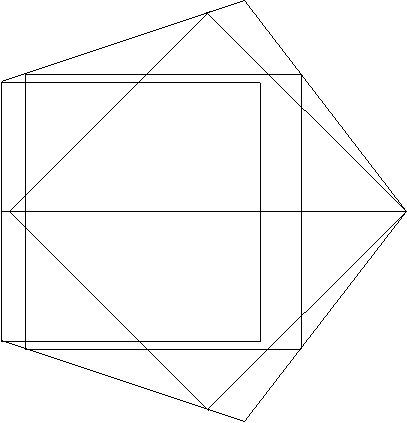Source: Original.
There are basically two different ways the square could be oriented. Either one side is parallel to a side of the pentagon, and the four corners are on the other four sides, OR one vertex is coincident with a vertex of the pentagon and two neighboring vertexes lie on the other sides. There are other orientations, but trying to find the maximum square will lead to one of these two.
A
_/ \_
W---------X
_/| s |\_
F | | B
\ | | /
\| |/
Z---------Y
D-------C
|
If one side is parallel, let s=WX and t=AX.
Using the Sine Law in triangle AWX, s/sin(108)=t/sin(36). Using the Sine Law in triangle BXY, s/sin(108)=(1-t)/sin(18). Setting these equal, we find t=sin(36)/(sin(18)+sin(36)). Solving for s we find s=sin(108)/(sin(18)+sin(36)) = 1.060497. |
